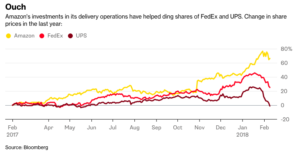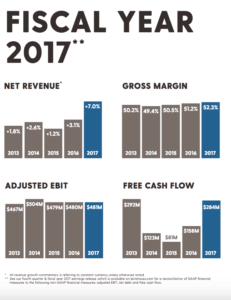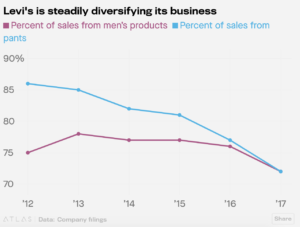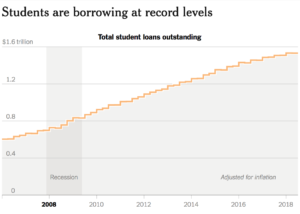For some reason, America’s current postal delivery system has never been updated; we’ve been operating on a centuries-old system. But as technology continues to improve, the demand for convenience has risen too. Magically finding your purchases on your doorstep within days of ordering is not special but now an expectation. People are pushing the boundaries of convenience— grocery deliveries and subscription box services are a testament of that.
The services that make this new preference for convenience possible are many times the postal delivery services. For many postal services such as USPS, package deliveries are quickly becoming a key part of their business, if not the focal point. Yet, surprisingly, the U.S. Postal Service lost almost $4 billion in 2018 even as package deliveries rose because it is not enough to offset the sharp decline in first-class letters caused by the internet and email. In addition to the decline in letters, the rising wages for workers and rising gas prices means higher overall transportation costs to produce delivery services. As the delivery service industry becomes pressed for profits (or rather any revenue), companies such as FedEx, USPS, and others rely heavily on packages to sustain their businesses and Amazon is a major customer. According to a Postal Service worker, around 75 percent to 80 percent of the daily packages they deliver have the blue tape with the scattered Amazon logo—most are Amazon packages.
In particular, the United States Postal Service is especially dependent on Amazon. It is an independent agency of the U.S. in which the federal government is responsible for to ensure insular areas also receive service; according to their website, they are the only delivery service that reaches every address in the nation which is over 155 million residences and businesses. However, they do not receive any federal tax dollars, so the partnership with Amazon is a logical choice. For Amazon, delivery is one of the most important pillars of their business considering that one of the main selling points of the yearly Amazon Prime membership is free two-day shipping. In a mutually beneficial contract, Amazon and USPS agreed on strict guidelines such as adding a delivery day on Sunday for only Amazon’s packages and ensuring the priority delivery—even if the workers may be overworked.
Amazon’s priority on shipping is reflected in their fiscal statements as well, but takes up a significant part of their expenses. In 2015, Amazon spent $11.5 billion on shipping, 46 percent of its total operating expenses that year. With the holiday season coming up, Amazon is reportedly hiring thousands of delivery drivers because they are expecting to send 8.5 million to 9 million packages per day during the peak parts of the holidays, according to the president of the delivery tracking and management technology company ShipMatrix, Satish Jindel. This means the tech-giant is looking to hire seasonal workers in addition to the services the existing American delivery companies such as the U.S. Post Office, FedEx, and other partners and is only one example of how they spend their money on shipping.
With such a budget, allocating a little under half of the operating budget on shipping, Amazon has been looking at alternative options for their shipping. Earlier this year in February, Amazon announced that they would begin testing a new method of delivery service to replace United Parcel Service and other services and is supposedly called Ship with Amazon or Shipping with Amazon. Amazon said in a statement, “We’re always innovating and experimenting on behalf of customers and the businesses that sell and grow on Amazon to create faster, lower-cost delivery choices.” Sooner or later, these preparations will shake the industry of parcel delivery.
References:
https://www.bloomberg.com/opinion/articles/2018-04-04/congress-not-amazon-messed-up-the-u-s-postal-service
http://about.usps.com/who/profile/
https://medium.com/s/powertrip/confessions-of-a-u-s-postal-worker-we-deliver-amazon-packages-until-we-drop-dead-a6e96f125126
https://www.bloomberg.com/opinion/articles/2018-02-09/amazon-s-delivery-dream-is-a-nightmare-for-fedex-and-ups
https://www.nytimes.com/reuters/2018/11/15/business/15reuters-usa-postal-service-results.html
https://www.nytimes.com/reuters/2018/11/05/business/05reuters-amazon-com-delivery.html



